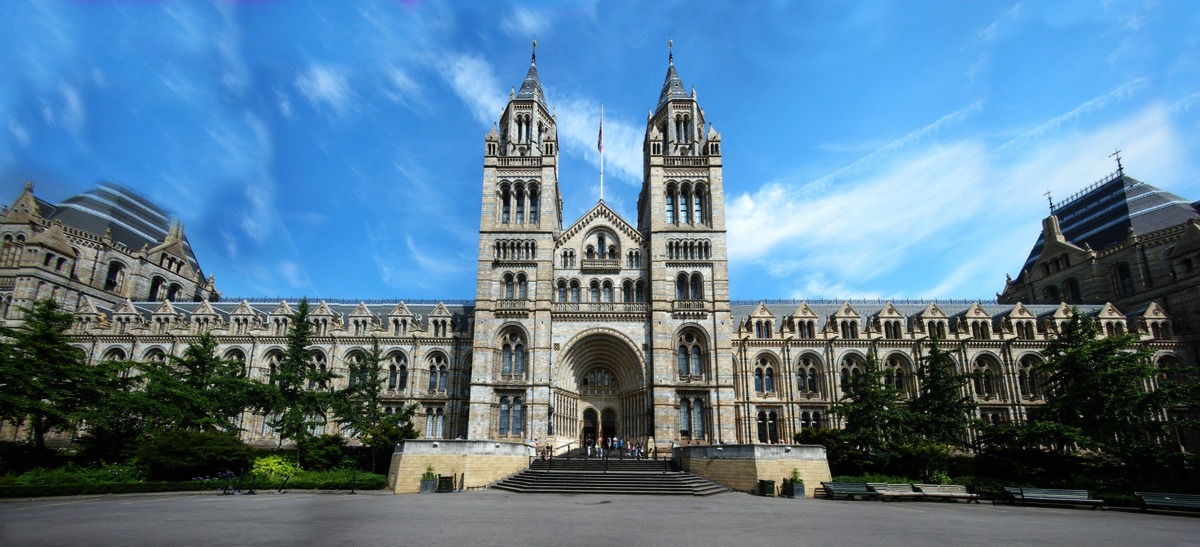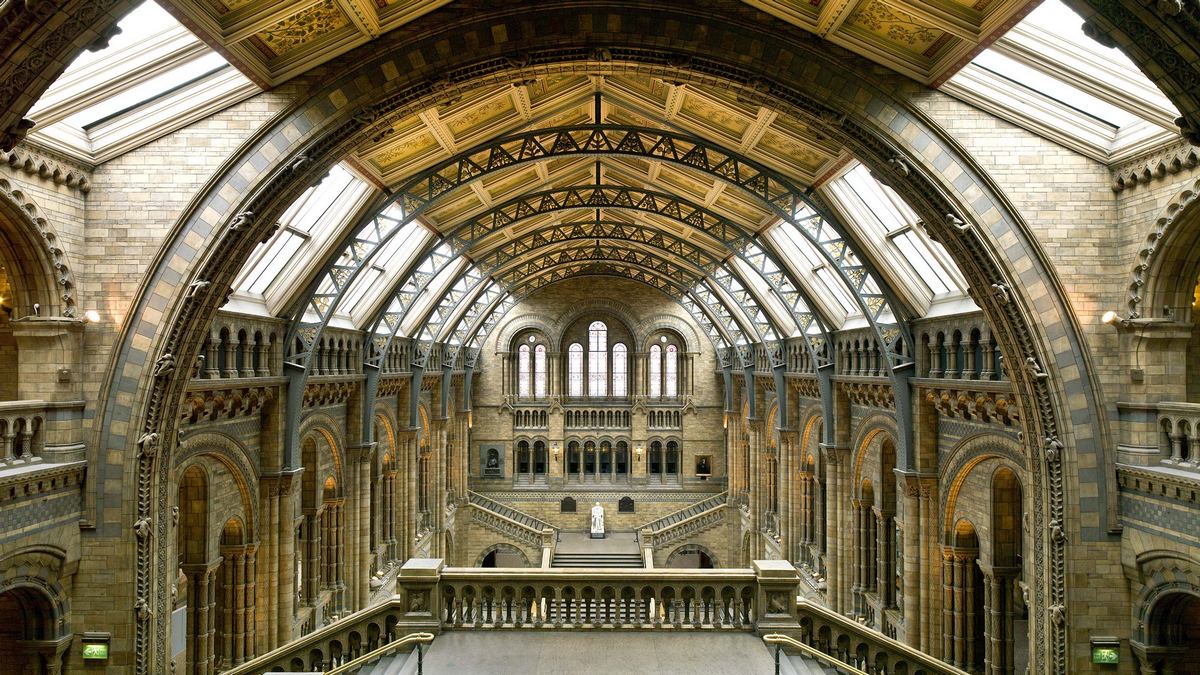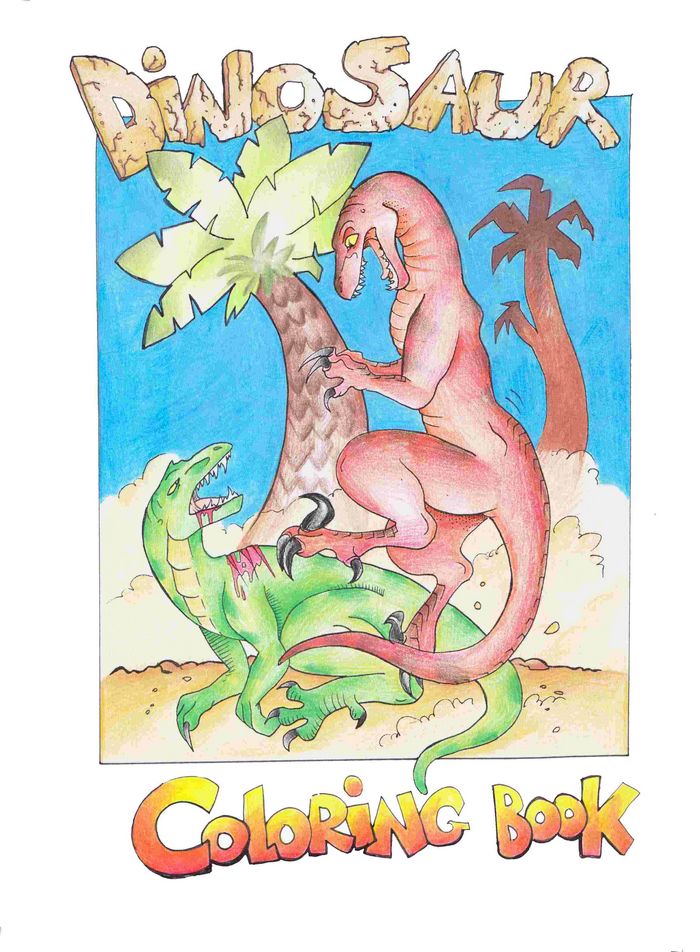Britain's Natural History Museum is one of the finest places on Earth for Dinosaurs and Prehistoric Life
Britain's Natural History Museum is one of the world’s finest, housing an enormous range of specimens from all over the world, some of which date back to the early days of scientific enquiry. Some were even collected by the great Charles Darwin himself. There are 80 million specimens in five main collections, comprising botany, entomology (study of insects), mineralogy, palaeontology and zoology. For over a hundred years the central hall was dominated by a giant (32 m long) Diplodocus which is in fact a cast taken from the original Diplodocus carnegiei which is housed in the Carnegie Museum of Natural History in Pittsburgh.
After discussions with King Edward VII, who was a trustee of the museum, Andrew Carnegie, the Scottish American industrialist, arranged for a cast of the skeleton to be made at a cost of £2,000, which was then shipped in 36 crates across the Atlantic, installed and unveiled on the 12th May 1905 to great acclaim by both the public and the media.
A bridge takes visitors to a Mesozoic world
Sadly, Dippy, as she is known, has been moved out, replaced by a skeleton of a blue whale which now dominates the cathedral-like space of the main hall. Too bad, say some, but what is one to do? Whether Dippy is there or not still doesn’t detract from the fossil collections and displays in the museum. They have built a wonderful dinosaur display which takes visitors on a bridge over a Mesozoic world, where dinosaurs hang suspended in space in lifelike poses – lit to emphasise the beauty of these ancient bones. Away from that central display are more amazing specimens, including the plesiosaurs excavated by Mary Anning from the cliffs along the Dorset Coast – what is now known as the Jurassic Coast World Heritage Site.
A beautiful pile of Gothic brickwork was constructed
The building is a cathedral to nature, with a vaulted central hall, ornately carved pillars and a sweeping staircase to carry visitors upwards into the rarefied air of science and reason. Sir Richard Owen, the preeminent natural scientist of his day, campaigned ardently for the construction of a building to house the specimens that were being collected by naturalists and geologists both at home and abroad. Eventually his dream was realised when funding was approved and this, the most beautiful pile of Gothic brickwork, was constructed and opened in 1881. It used to be part of the British Museum, but was separated in 1963 although it was still called the British Museum (Natural History) until 1992.
Collections were abused, robbed, taken hostage and lost.
The original core of the museum’s collection was that of the Ulster doctor Sir Hans Sloane who sold his collection to the British Government, which was then stored in Montague House, Bloomsbury, in 1756. This was the home of the original British Museum. However, this collection was open to abuse by the various directors and staff of the museum, who sold specimens to other museums, threw out or burned specimens and made dodgy appointments of incompetent staff. Collections were abused, robbed, taken hostage and lost.
Richard Owen turned everything on its head
Then along came Richard Owen, who was appointed superintendent of the natural history departments in 1856, and who turned everything on its head, leading Bill Bryson to write:
“by making the Natural History Museum an institution for everyone, Owen transformed our expectations of what museums are for”.
Owen realised that they needed some additional space, and so land in South Kensington was purchased for a new museum. A competition was then run for the best design, which was won by a certain Captain Francis Fowke who then promptly died. The work was taken over by Alfred Waterhouse who revised the plans and got on with the job. Construction began in 1873 and was completed in 1880, with the museum opening in 1881.
The terracotta tiles, which are a feature of the museum, were made by a Tamworth-based company called Gibbs and Canning, and they certainly did a great job in the way they depicted flora and fauna with extant and extinct species within the west and east wings of the building respectively.
Plan Your Visit
Address
Cromwell Road, London SW7 5BD
Hours
Open Monday-Sunday10.00-17.50 (last entry 17.30)
Closed 24-26 December
And seeing that you are here, grab yourself a copy of our free colouring book, which is full of wonderful dinosaurs and other Mesozoic creatures for you to bring back to life.



